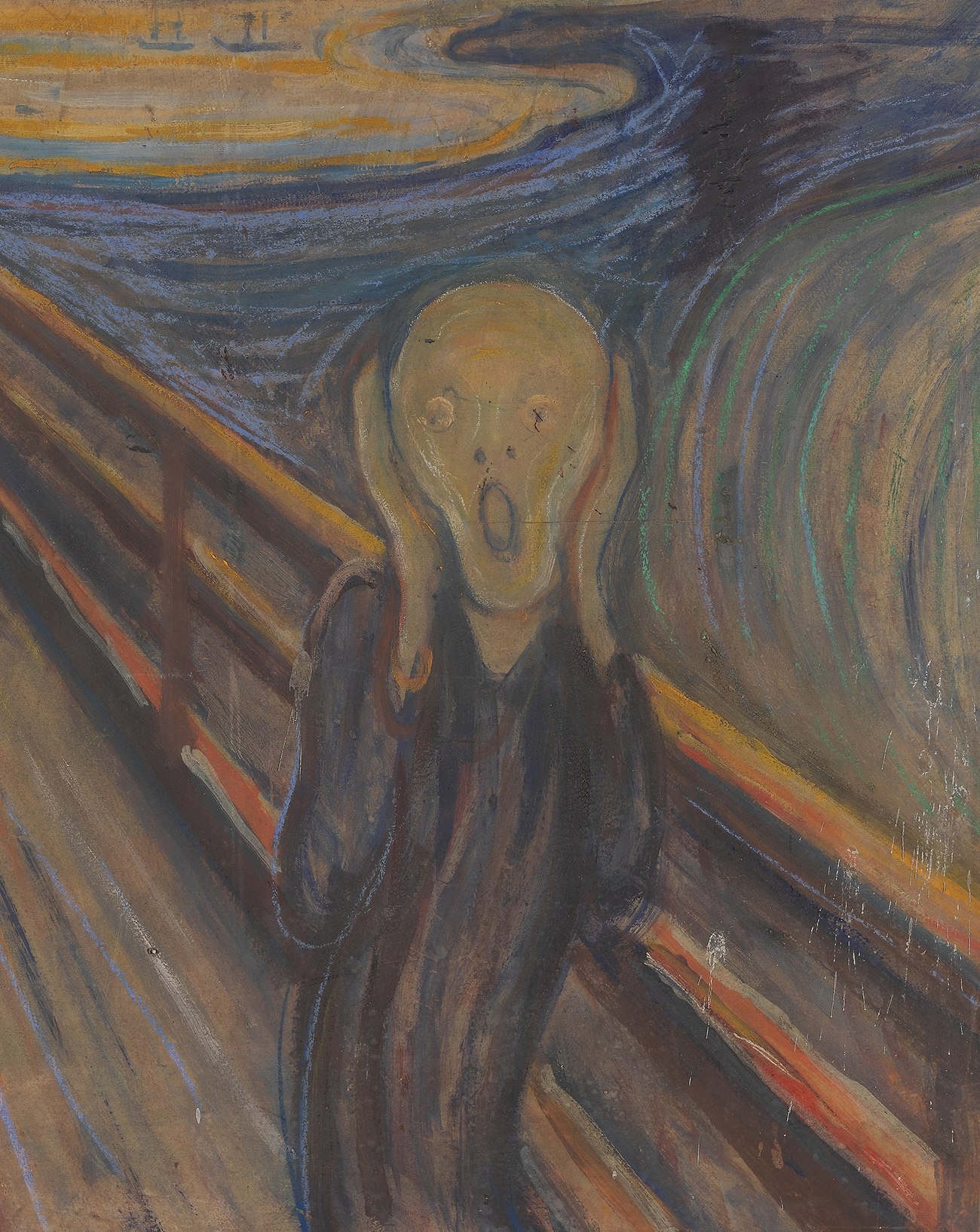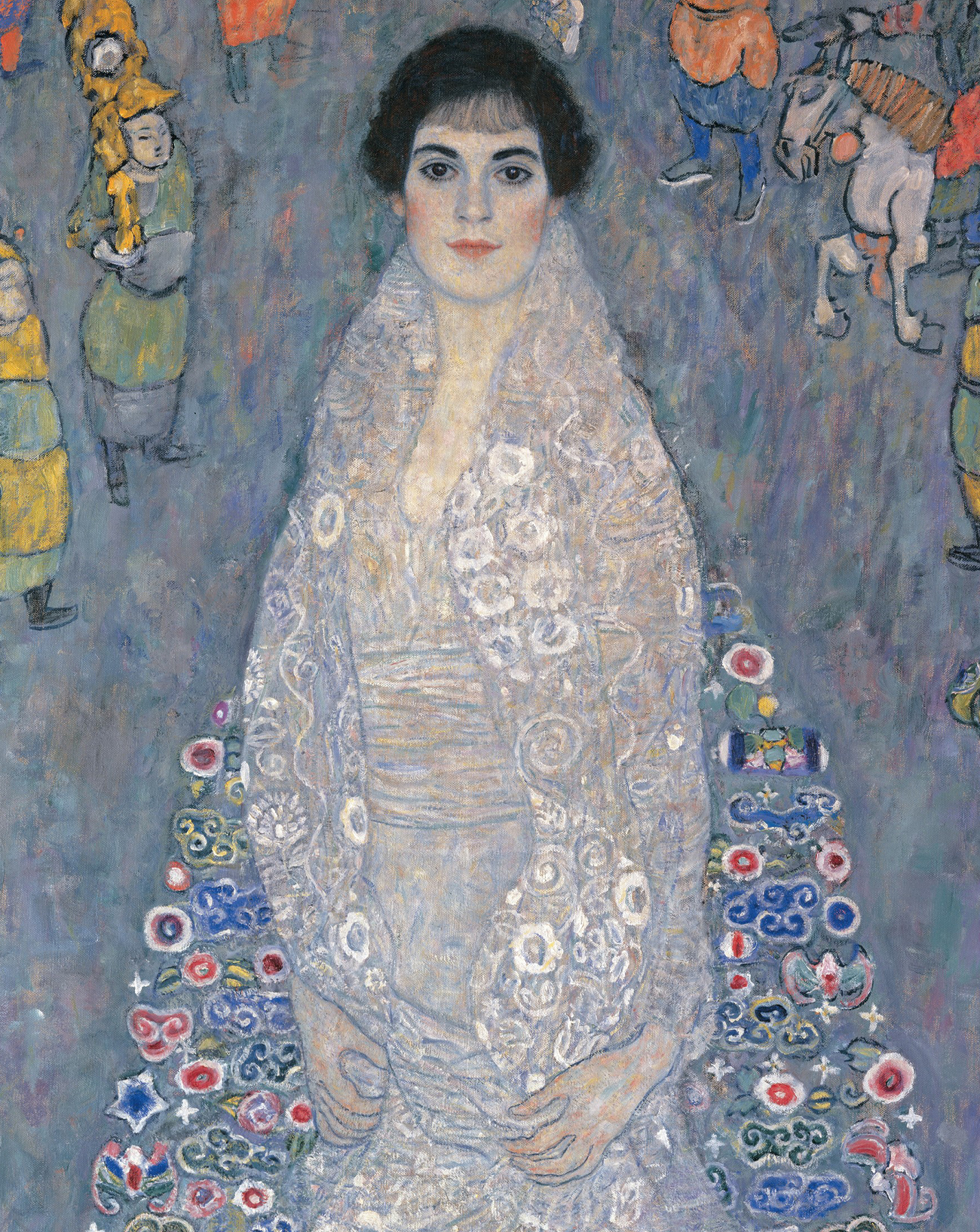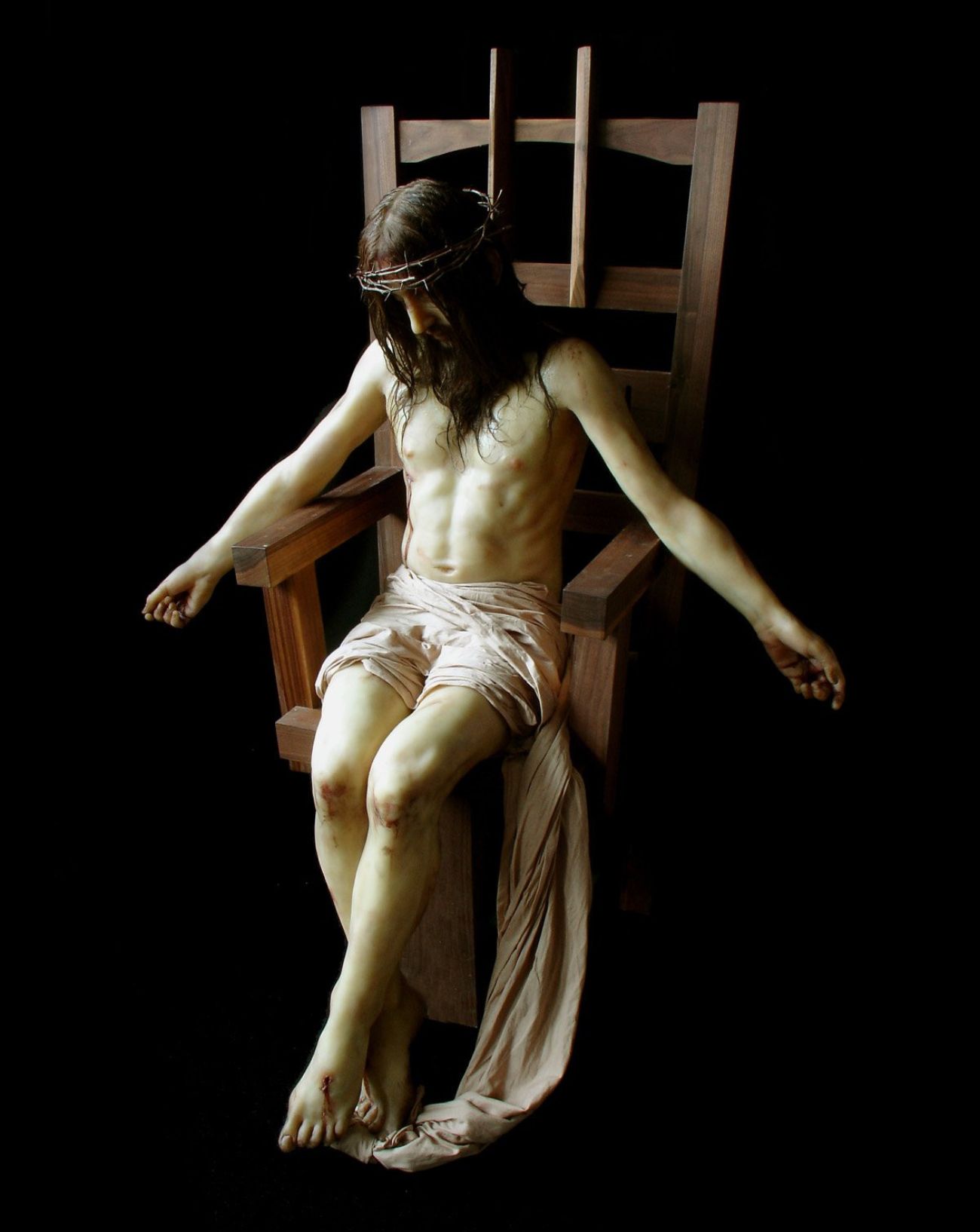
12

12
A stolen work by Banksy resurfaces in an Italian loft
En janvier 2019, lors d’une opération commando digne d’un cambriolage de banque incluant meuleuse et cagoule, une oeuvre de Banksy peinte sur une porte du Bataclan en hommage aux victimes des attentats de 2015 avait été dérobée. Après un an et demi de recherches, la peinture a finalement été retrouvée par les forces de l’ordre dans le grenier d’une maison italienne.
Par Camille Moulin,
By Camille Moulin.
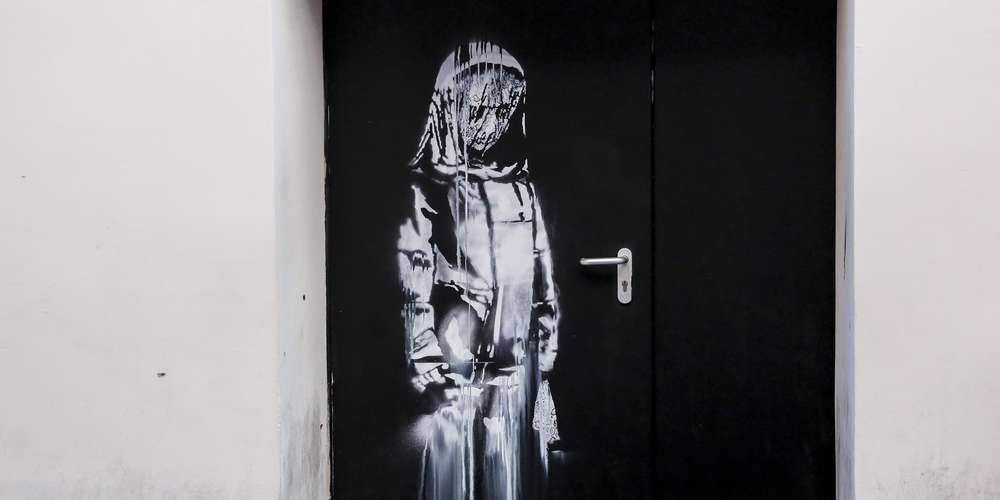
Peinte en blanc sur un fond noir ébène, une jeune femme regarde le sol, éplorée. En juin 2018, le street artist Banksy avait réalisé cette œuvre au pochoir commémorative devant le Bataclan en hommage aux 90 victimes des attentats perpétrés en novembre 2015 dans la salle de concert parisienne. C'est justment sur l’une de ses portes de secours, par laquelle de nombreux spectateurs du concert des Eagles of Death Metal avaient essayé d’échapper aux terroristes, que l'on pouvait retrouver la peinture.
Mais l’oeuvre de Banksy suscite aujourd'hui bien des convoitises. Bien que souvent éphémères, ses pochoirs ont atteint un niveau de notoriété tel qu’ils sont aujourd'hui estimées à des prix faramineux, à l’image de son oeuvre “Girl with balloon” qui, en 2018, avait été adjugée à plus d'un million de livres lors d’une vente aux enchères. Ainsi, lors d’une opération commando en janvier 2019 au Bataclan, un groupe de braqueurs armés d’une meuleuse était parvenu à découper la porte noire de la salle et le portrait de cette femme endeuillée afin de s’en emparer. Suscitant une vive indignation, ce vol avait même déclenché une prompte réponse d’un mystérieux internaute dénommé Bryan S Gaakman, anagramme de “Banksy anagram” et l’un des pseudos de l’artiste. Relayant l’avis de recherche peu après le délit, l’internaute avait aussi lancé une cagnotte en faveur des victimes du 13 novembre, éveillant de nombreuses suppositions sur sa véritable identité.
Ce mercredi 10 juin s’est enfin produit le moment tant attendu : lors d’une opération conjointe des forces de l’ordre françaises et italiennes, l’oeuvre dérobée au Bataclan a finalement été découverte “bien cachée” dans le grenier d’une maison de Tortoreto, au centre de l’Italie, a annoncé jeudi 11 juin le procureur de l’Aquila. Victime de son poids symbolique, cet hommage était semble-t-il presque impossible à vendre, du moins dans un circuit légal. À l'heure qu'il est, les autorités essaieraient toujours de déterminer l’origine et les raisons du vol.
Ce vol fut loin d'être une première pour l’artiste, dont les œuvres sont régulièrement l’objet de pillages, et ce encore très récemment. Le 6 mai dernier, l’artiste avait fait don de sa peinture “Game Changer” aux services de santé britanniques (NHS). Deux jours plus tard, un homme s’était introduit dans l’hôpital armé d’une perceuse, tentant de dérober l’oeuvre avant l’intervention des services de sécurité.
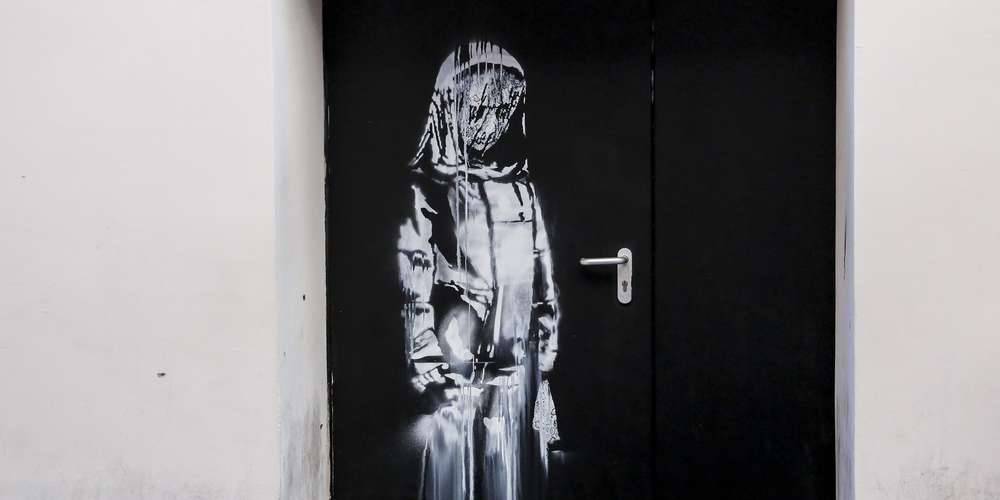
Painted in white on an ebony black background, the young woman looks at the floor weeping. In June 2018, Banksy did this stencil work outside the Bataclan in commemoration of the 90 victims of the attack carried out in November 2015 at the Parisian music venue. The painting was done on one of the very emergency doors through which many spectators at the Eagles of Death Metal concert had tried to escape from the terrorists.
But these days Banksy’s work rouses more than just a little interest. While often only meant to be ephemeral, his stencilled art works have achieved a level of fame that sees them going for staggering prices, just like the work “Girl with balloon” which in 2018 was sold for more than a million pounds at auction. Thus, during a commando-esque operation in January 2019, a group of robbers armed with a grinder succeeded in cutting the black door off the building, taking with it the portrait of the women consumed with grief. Provoking vast indignation, the theft triggered a prompt response from a mysterious web-user named Bryan S Gaakman, anagram of "Banksy anagram" and one of the artist's pseudonyms. Relaying the 'wanted' notice shortly after the crime, he also organised a fundraiser for the victims of November 13th, raising many questions about his true identity.
Wednesday June 10th finally saw the long-awaited moment: during a joint operation by French and Italian police, the work stolen from the Bataclan was finally rediscovered “well hidden” in the attic of a Tortoreto house in central Italy, the Aquila prosecutor announced on Thursday June 11th. Victim of its symbolic weight, this tribute was apparently almost impossible to sell, at least on the legal circuit. The authorities are still trying to determine the origin and the reasons for the crime.
This theft was far from the first for the artist, whose works are regularly looted, even very recently. On May 6th, the artist donated his painting “Game Changer” to an NHS hospital. Two days later, a man entered the hospital armed with a drill, and tried to steal the work before the security services intervened.










